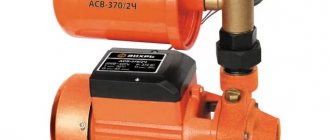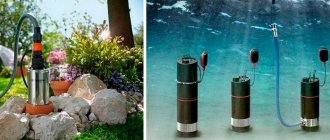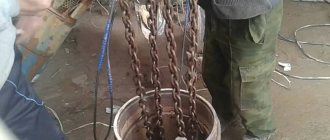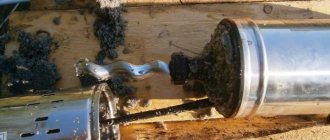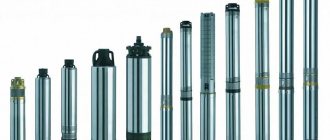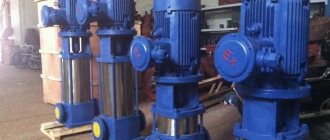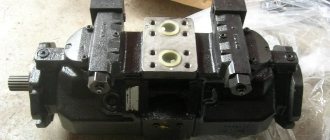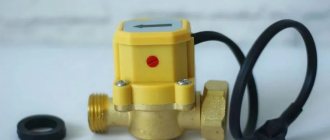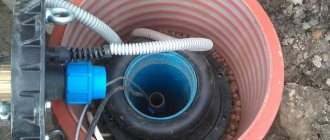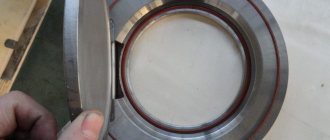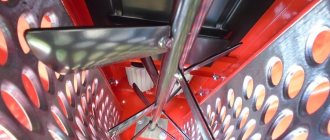Many people in our country have country plots where they grow vegetables. Every gardener knows that you can’t count on good results if you don’t water your plants regularly. However, what to do if the water source is located at a considerable distance from the site?
Even if the water is only 10 meters away, such an obstacle can become serious enough to provide moisture to vegetables and shrubs growing on the site. You have to make a lot of physical effort and carry water in buckets. However, not everyone can do this , especially the elderly, who are the majority among the owners of summer cottages.
The problem of irrigating gardens in the country can be solved by installing a surface pump. With its help, you can ensure high-quality watering of plantings. This equipment is offered in a wide range ; various manufacturers offer their products. Models of surface pumps differ in their purpose and have certain design features. We will talk in more detail about this type of pumping equipment below.
What is a surface pump?
If we talk about this type of water supply equipment such as pumps, we note that they are divided into two types:
- superficial;
- submersible
Installations of the first type are mounted on the surface in close proximity to the water source from which the liquid will be drawn. Submersible models are used for pumping water from a well with a large water depth. This equipment is equipped with a multi-stage suction design , which, when using the pump, is immersed in water. This provides the opportunity to water the beds on your site over a long distance.
Surface pumps are often used in private homes as an additional component of the plumbing system. The surface pumps included in its composition are most often used for pumping liquids. With their help, water is pumped out from special reservoirs, which is then used to water vegetables and various plants.
This type of pumping equipment differs in its design. Each pump model of this type is designed for use in a well with a certain depth. The maximum depth from which such equipment can supply water reaches 10 meters.
The main difference between submersible pumps and surface pumps is that they do not have much power , so they can only be used for pumping water. It is prohibited to transport mineral oil, fuel and other dense liquids through pipes using them. Using this equipment for such purposes may result in pump damage or system malfunction.
Pump connection installation diagram and list of required components
- Surface pump
- Hydraulic accumulator with a volume of 50 l or more
- Check valve with or without strainer
- Connector with 5 terminals
- Pressure switch with internal or external thread
- Pump filter 5 or 10 SL
- Dry running sensor
- Thermal manometer
- Brass plug 1
- Brass plug ¼
- Coupling 32 x 1 (metal-plastic)
- Reinforced pipe 32 by 1 (metal-plastic)
- Corner 32 by 1
- Nipple 1 ShSh
- Hose for corner connection 1
- Bleeding plug
- American
- Fitting with 3 outlets for draining water
- Stabilizer
- Heading
- Heat shrink sleeve
- Steel cable
- Submarine cable
- Metal-plastic fittings and pipes
In addition to the above elements, along with the installation of a surface pump, it is necessary to have float switches that allow you to automate the operation of the device. Such switches perform the function of automatic start when the water filling level reaches its maximum. The pump turns off automatically if there is little liquid in the source.
Expert opinion
Kuznetsov Vasily Stepanovich
The design features of the surface pump require reliable protection from high levels of humidity. For this purpose, a special place is equipped near the source.
Criterias of choice
Before choosing a surface pump for drawing water from a well, you need to find out at what depth the water source is located on your site. The parameters of the equipment will largely depend on this. Since in most summer cottages the depth of the wells is shallow , for measurements it is enough to lower a fishing line with a weight inside the pipe.
This way you can find out the depth of your well. Next, based on this parameter, you can choose the right model that is suitable for your well. The technical data sheet for the pumping equipment indicates the maximum depth from which it can supply water. Therefore, familiarization with the technical data will allow you to select the right model.
Key parameters
When choosing a pump, you need to focus on:
- maximum height of water rise;
- take into account the distance of the water source from the house;
- take into account the volume of pumped water.
To make it clearer, let's explain this with a specific example. Let’s assume that there is a well on the site 10 meters deep, located 15 meters from the country house. The owner's water consumption is 60 liters per hour. This means that when you come to the store, you need to consider models that have a capacity of 60 liters with a lifting height of at least 12 meters. The resulting calculation of water consumption will be the main parameter when choosing a surface pump.
Rating of devices for contaminated water
Pedrollo D20
The model has high power and performance - the pressure reaches 27 meters in height.
Grunfos Unilift CC 9 A1
This is a universal device with a capacity of 14 cubic meters. m per hour and a head height of 9 m.
Grunfos Unilift CC 5 A1
Budget model with a capacity of 6 cubic meters. and a head height of 5 m.
The feasibility of using models of this sample:
- For draining underground rooms and pits
- For pumping contaminated water from cellars, sewers or during natural disasters
- For draining reservoirs of artificial origin
- Pumping water from a drainage pond for irrigation
Expert opinion
Kuznetsov Vasily Stepanovich
When choosing a device of this type, you should take into account the operating features.
Advantages:
- Capable of handling large masses regardless of density
- Models with membranes can work with large particles of about 5 cm, if their concentration does not exceed 50%
The drive runs on electricity or gasoline.
Flaws:
- Noise during operation
- Features of the location of suction hoses
- Limited lift height
Well cross section and pressure
When creating a well, pipes of a certain cross-section are used. Taking into account their diameter, it is necessary to select pumping equipment. If the owner will submerge the installation to supply water, then in this case its size should be slightly smaller than the cross-section of the wells. Currently, the most common cross-section of casing pipes is 4 inches, which in terms of the more familiar measurement system is equal to 100 mm. Therefore, when choosing a pump, it is necessary to focus on this size.
Before purchasing a device, it would be a good idea to consult with specialists who will be drilling wells. They can give you recommendations on which well pump is best for your shallow well. You should also know which models are best for sand wells. If you do not take this point into account when purchasing pumping equipment, then during operation it can quickly fail due to the strong influence of sand fractions on its operation.
For example, if the owner decides to use the most popular model of the “Rucheek” pump, then he will be able to ensure efficient water supply in a well up to 15 meters deep. With its help, you can organize a stable water supply in your area at low cost.
When choosing a pump, you should pay attention to the maximum pressure it can support. To do this, you need to refer to the technical documentation. The value of this parameter in the passport for the pump is indicated in bars. The most important parameter is the suction depth. To determine the maximum pressure, it is necessary to use the suction depth characteristic. To this value you need to add 30, and for greater reliability add an additional 10%. If the well has a total depth of 15 meters, then to ensure water intake using a pump, a device is needed that provides a pressure of 50 bar.
Main characteristics of wells
When choosing a pumping station, you should consider the following well parameters:
- Static level
- Dynamic level
- Debit
- Bottom level
- Pipe diameter size
If the well owner has a technical document, then it contains all the necessary information on these criteria. If the well has not been in use for a long time, it is necessary to measure the parameters yourself.
Additional accessories
You can find out which pump is best to choose for a sand well only after a detailed analysis of the model has been carried out. The choice should be made in favor of one that suits the technical characteristics. Such wells place high demands on filters , which are included in the pumping equipment.
In order to ensure high operating efficiency when using a well pump, it is necessary to use various components. To do this, you need a cable for a submersible pump, and a hose for a surface pump. In addition, to connect the equipment you will need an electrical cable and circuit breakers. The latter will be needed in case of an emergency shutdown. The control of the pumping equipment must be located outside. It should be placed in a room that will be protected from external influences.
If the surface pump does not pump water from the well, then it is necessary to turn it off and then carry out initial diagnostics. If a malfunction is detected, repair work must be carried out. In this case, it will be possible to restore its functionality.
To carry out repairs, it is better not to try to do something yourself. It is best to contact specialists from a service organization that provides warranty and post-warranty maintenance of pumping units.
If there is a surface well on the site, then during operation water may enter it. Pumps used in wells for water with sand must be equipped with additional filters to prevent dirt and sand from entering the water supply system.
Review of popular models
Speroni KPM 50
The model is made of durable high quality materials. Features a silent operation mode.
RSM 5 GA
The unit has a high level of performance. The system allows you to control internal pressure.
Marina KPM 50
This model is characterized by economical operation and installation.
An automatic system will be the best solution for autonomous water supply and irrigation systems. Correct operation of the equipment and a wide range of programs will ensure a good final result.
The essence of the operation of such systems is interaction with automated devices.
The equipment package includes the following components:
- Control blocks
- Valves
- Branched pipelines
- Irrigation devices
A pump of this type ensures uninterrupted water supply during autonomous start-up and filling of reserves to the required level.
Advantages of devices of this sample:
- Reliable pressure level under constant flow conditions
- Uniform efficiency under continuous loads
Flaws:
- Big sizes
- High demands on water quality
- The need for short breaks during work
The functionality of such systems is determined by the on and off mode.
Selecting a pump model
In order for the choice of a well pump to be correct, when searching for equipment, it is necessary to focus on the most important parameters of the equipment. In some cases, for effective water supply on the site, it is necessary to install powerful high-power pumping equipment. With the help of such devices, it is possible to ensure an uninterrupted supply of water to the area. However, you should know that such models are not cheap , and you will have to spend significant amounts of money to purchase them.
If the pump works to pump water out of a well with sand, then you will have to spend money on protecting the water from sand. And for this you will need to purchase:
- settling tanks;
- filters.
An exact list of additional accessories that ensure efficient, long-lasting operation of the pump can be obtained from specialists.
Surface equipment can be used for wells located at a depth of no more than 20 meters. If the water source lies at a greater depth, then the best solution in this case would be to install a submersible pump.
For shallow well depths, using an inexpensive pump model will be sufficient. Before purchasing a device, you need to decide on the purpose of its use. To ensure water supply on the site, some models of pumping equipment are used, but for agricultural purposes the choice is made in favor of completely different ones.
Hydraulic accumulator pumps
Such a device should be selected taking into account the function of regulating pressure, starting and stopping the pump, and it is also necessary to check the water supply capabilities and the suitability of the selected equipment.
A good model of this type is considered to be Jumbo 60/35. The unit is equipped with a container made of cast iron and steel.
Features of the system:
- Ensuring stable pressure
- Sudden pressure surges during pumping, associated with hydraulic vibrations
- Frequent system startup
To prevent sudden changes, such a station is equipped with a hydraulic accumulator.
Which garden pump is best?
Surface pumps for providing water supply at a summer cottage are offered by many companies whose specialization is the production of installations for water supply systems. Several companies are currently market leaders.
- Jumbo;
- Whirlwind;
- Neoclima;
- Grundfos;
- Wilo.
You can purchase the pump needed for water supply in one of the specialized stores or by visiting the online store. The price for them is quite consistent with the quality of the devices.
Popular surface pump models
Among all the pump models, we can highlight those that are in greatest demand among consumers today.
- Elitech NS 600P. The peculiarity of this installation is that its design includes a self-priming pump , and also has a steel frame. This pump can be used for pumping clean water in conventional and drip irrigation systems. The power of the model is 620 W. As for its productivity, it is at the level of 50 liters/hour. The depth from which these installations can supply water is 8 meters.
- "Jumbo 70 50 P." This model is able to work at a maximum depth of up to 9 meters. The power of this model is 1100 W. The pump capacity is 4.2 cubic meters. meters/hour.
- "Whirlwind PN 1100N". The power of this pump is 500 W. Its performance is the same as the previous model.
- "AQUARIUS BC-1.2-18U. The peculiarity of this pump is its vertical position. The power of the equipment is 690 W. It has a capacity of 4.5 cubic meters of water per hour. This model can operate at a maximum depth of 8 meters.
If in a summer cottage the source of water supply is located far away, then in this case, in order to ensure constant watering of plants and beds, it is necessary to drill a well and install a pump. Choosing a pump is a responsible matter, since there are quite a few models and each has its own performance and purpose of use. For irrigation, you need to choose a suitable model , taking into account not only the price, but also performance parameters and water supply depth.
In order not to make a mistake with your choice, you must first familiarize yourself with the types of pumping equipment and then make a choice. To avoid mistakes, it would be useful to consult with specialists who will not only help you choose an installation, but also give advice on operation.
Top rated household pumps
Aquario ARM-100
The model has minimal characteristics, but is durable and economical to install and use.
Gilex Jumbo
The device has high performance. Consuming 600 W, the pump is capable of providing a head of about 35 meters.
Wilo PB-088EA
This model from a German manufacturer consumes 140 W per hour of operation, while the pressure is 9 meters.
Devices for domestic use are quite economical compared to industrial units.
Devices of this type are divided into two types:
- Centrifugal single stage
- Centrifugal multistage
The choice of design should be made taking into account the characteristics and purposes of use.
Peculiarities:
- Compact drive and low noise level during operation
- Water consumption – maximum 70 liters per minute
- Fluid pressure level – 17 meters
- Electricity consumption – minimum 500 W
Device advantages:
- Possibility of long-term uninterrupted operation
- Easy to install
- Availability of pricing policy
- Small dimensions
Flaws:
- The suction height is a maximum of 9 m.
- The distance for pumping water is from 17 to 42 m.
User comments and advice
Do you use surface pumps?
Of course! I want to try it
Valery Albertovich
In my experience, I would recommend a suction pump. In terms of power, of course, see for yourself; the price largely depends on it. If you need water for drinking and washing, that’s one thing, but for watering you need very powerful equipment. A well is an ideal option, since the time of wells has already passed. It’s time for technology to get involved in this matter, but on the other hand there are also disadvantages: there will be no light, there will be no water, which is not very good.
Sergey
When buying a pump, first of all, inquire about the availability of spare parts for this equipment. This is especially true for pumps with replaceable blades. Even if you are assured that spare parts are in stock, do not be lazy to call the warehouse. You will be surprised, but in 90% of cases they will tell you that such spare parts have not been available for a long time and are not expected. A pump that has served its intended life without the ability to replace parts or components will turn into a useless piece of iron. If you buy a pump with a float sensor designed to turn off the pump to control the water level in the excavation, be sure to use it, otherwise you risk burning the pump ahead of time.
Unit design
To understand the operating principle of this brand of unit, you need to understand its structure. From the name itself it already becomes clear that the surface pump is not lowered into the water, but is installed somewhere on the surface of the earth, not far from the hydraulic structure from which the water is drawn. Water is pumped using the self-suction method through a hose inserted into the water (this can be a hose or pipe). That is why the depth of water intake from surface pumps is not very large – it does not exceed 10 m.
This, in principle, is enough, because outside the city, in summer cottages, owners rarely use artesian wells with a depth of more than 50 m. More often, wells or sand wells with a depth of up to 20 m are used for this purpose. It would seem that for such wells a surface unit is not the best the best option, but today engineers have overcome this problem too. You can install an ejector in the well, which increases the depth of water intake to 50 m.
True, for the ejector you will have to use a two-pipe system, and therefore a completely different model. It has two pipes that are connected to pipes going into the wellbore. And one pipe that pumps water further into the home plumbing system. In principle, these are the main differences that divide the surface pump for water wells into two groups. Otherwise it is the same centrifugal type design.
It was centrifugal force that replaced human muscle power, although many summer residents still use a hand pump for a well. It can be considered the predecessor of surface-type pumps - the intake mechanism is located on the surface of the earth, and water is pumped out through a hose. The addition of an electric mechanism to the hand pump allowed it to evolve into a surface pump. However, even such a primitive device has an undeniable advantage over modern analogues - the absence of the need for electricity.
With ejector
General Features
A few words about what all models of surface pumps have in common.
- Versatility. This indicator is mainly determined by the possibility of laying a suction hose into the shaft of a hydraulic structure. If we talk about well pumps, then when choosing the unit itself, its diameter must be taken into account. Because the device must easily enter the well without touching its walls. The surface pump is not installed in the shaft; only the hose is lowered there. And it can be of minimal size, and it will be smaller than the minimum size of the casing pipe.
- Compared to submersible analogues, surface ones are more powerful, and their efficiency is higher.
- And the most unfortunate thing about these devices is the shallow suction depth of water.
- Again, comparing them with deep ones, it can be noted that there is no talk of 100% sealing of the housing here. In principle, it is not needed, because the equipment does not go into the water. The only thing you need to pay attention to during operation is to create conditions for the pump to operate in a dry place.
- Small dimensions and, accordingly, low weight of the product.
Basement installation
Attention! The main requirement for the operation of surface self-priming pumps for wells is its installation in a room where the temperature is always positive and does not drop below +5C.
But according to reviews from a large number of consumers who have already had experience using both borehole and surface pumps, what is attractive to everyone is that the unit is installed on the surface. This is understandable, because in this way the pump is under supervision at all times. It is easier to maintain and repair. On the other hand, if local water supply is used only in the warm season, then the pump itself can be easily dismantled, placed in a closed room, and installed again in the spring. And all this will take literally an hour at most.
How to choose surface water equipment
Main parameters:
- Depth of water rise. Measure the distance from the suction pipe to the surface of the liquid surface.
- Pressure The parameter indicates the maximum water transmission range. The length of the water supply pipes or irrigation system is taken into account.
- Engine power. With increasing power, the pressure and lifting depth increase.
- Electrical energy consumption.
- Material. Only high-quality components (bearings, blades) will withstand intense work.
- Noisy running pump.
- Safety. The parameters include: ease of installation, tightness, quality of pump assembly.
- Service maintenance. If there is no service center in the region to service the selected model, then difficulties will arise with warranty repairs in the event of a breakdown and with the purchase of spare parts.
Secondary parameters:
- Brand name. You don’t have to overpay for a well-known name. There are several well-known brand companies in the segment of surface pumps, but only new manufacturers have proven themselves well.
- Price. You need to choose a pump based on balanced characteristics.
The best circulation pumps for heating
Heating circulation pumps are used to force water circulation in a circle. The devices can also work with hot water, since their main area of application is heating systems. The devices create pressure differences that help the fluid overcome the resistance created in the pipe. When choosing a circulation pump, you should pay attention to the pressure created, which determines how large systems the device can serve, productivity and the maximum water temperature with which the device can operate.
The leader in terms of sales of surface circulation pumps is . Grundfos
is a Danish concern, the most popular and reputable company for the production of pumping units. The production volume is more than 16 million products per year. The company's head office is located in Denmark, and its main production facilities are located in Germany. Therefore, Grundfos pumps are often called German, as evidenced by the high build quality. In 2005, a plant for the production of Grundfos pumps was opened in Russia (Moscow region).
BISON NS-M1-400-CH
Our TOP continues - BISON NS-M1-400-CH with a productivity of more than 2 cubic meters of water per hour.
This vortex surface pump will supply water from a depth of up to 8 meters and provide a pressure of up to 35 meters thanks to a 400 W motor. The motor here is single-phase and has overload protection. So you don’t have to worry that such a pump may burn out. If something goes wrong, it will simply turn off.
The advantages of this pump include its very quiet operation. It is also worth noting its compactness and low weight, which greatly simplifies its transportation, storage and installation even in limited space, and the leg mounts contribute to stability. It is also worth noting that the pump has a cast iron body, which protects the internal parts of the device from damage and ensures a long service life.
- Type: vortex.
- Power: 400 W.
- Suction depth: 8 m.
- Water rise height: 35 m.
- Productivity: 2.1 m3/hour.
- Body material: cast iron.
Rating of surface fecal equipment
- Grundfos Liftaway B
- universal model flows up to 100 l/min, temperature range 50-70°C. - Wilo DrainLift Box
is a powerful model, flows up to 300 liters per minute with a power of no more than 600 W. - DAB Fecalift 200
is a productive model for cold wastewater, pumps out up to 70 liters per minute, power up to 65 W.
A type of equipment for pumping dirty liquids is fecal stations. Their difference from pumps:
- powerful engine;
- there is a filter element or a grinding device;
- equipped with float switches.
There are restrictions on the operation of these pumps:
- low suction height – from 1 meter;
- at low power the pump operates ineffectively;
- Due to high load, units often break down.
